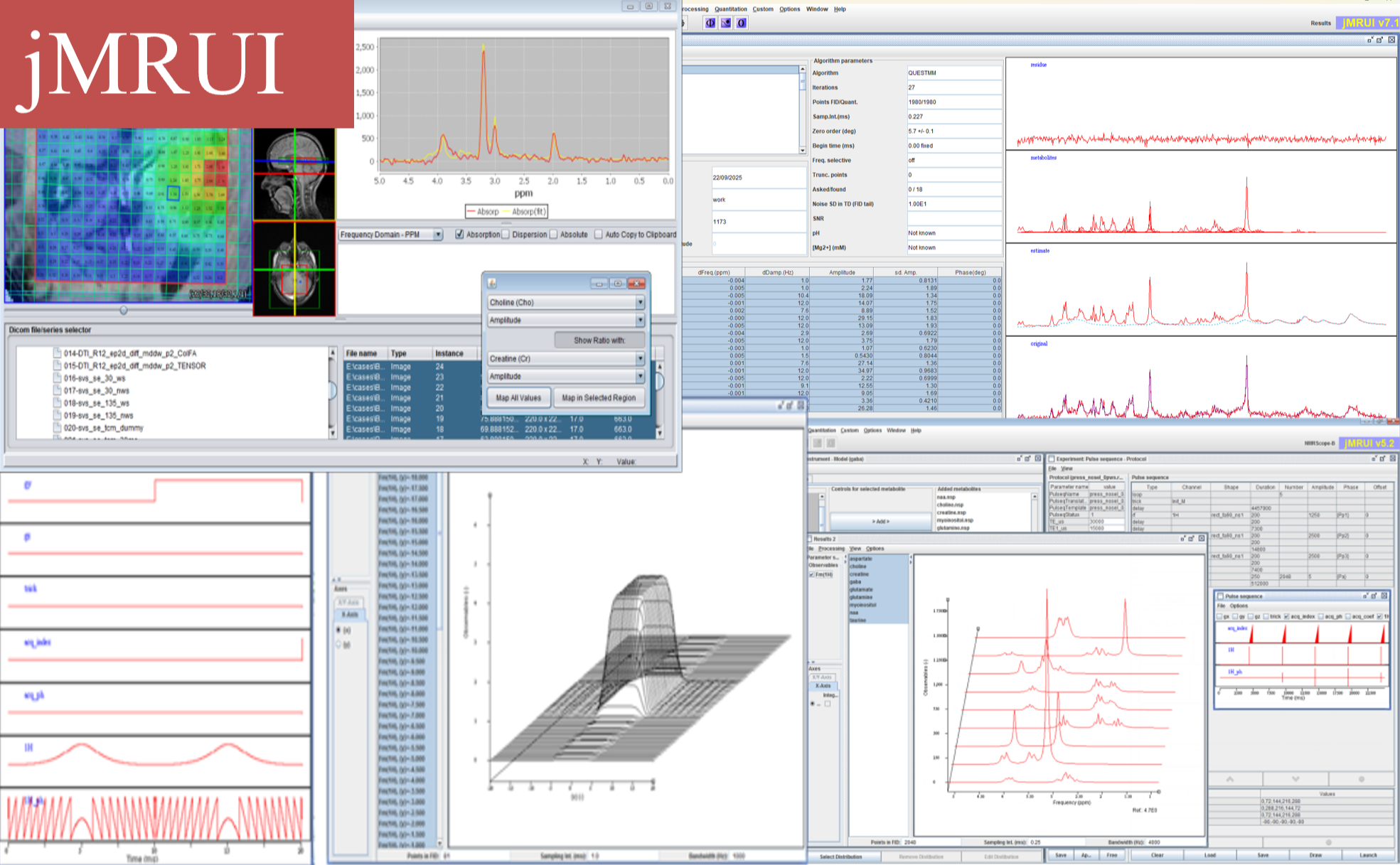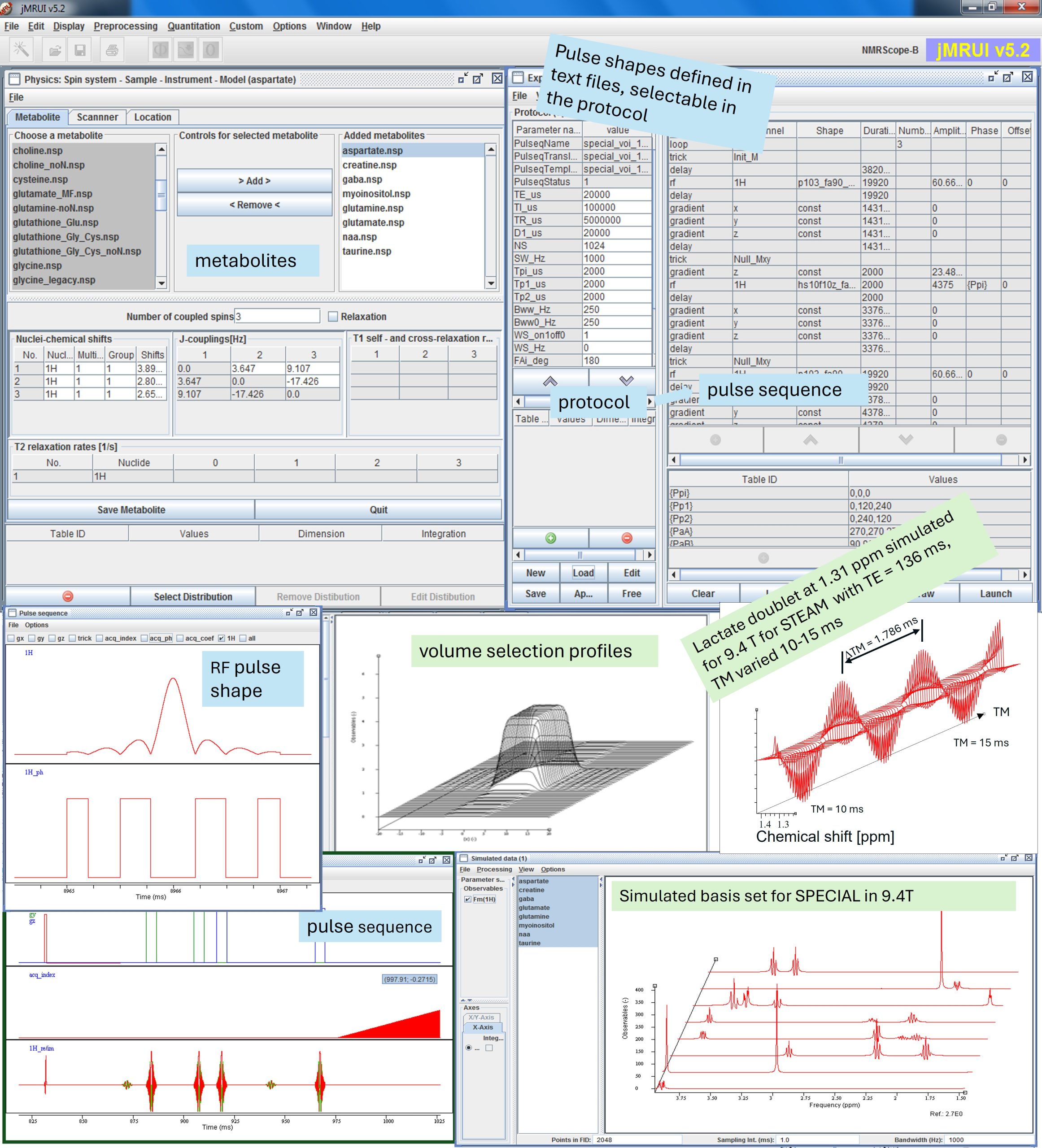
INSPIRE-MED INtegrating Magnetic Resonance SPectroscopy and Multimodal Imaging for Research and Education in MEDicine
–

jMRUI is a software suite for exploration and advanced time-domain analysis of magnetic resonance spectroscopy (MRS) and spectroscopic imaging (MRSI) data. It enables the users to visualize spectra and metabolite maps, preprocess the signals to match the data model, and quantify metabolite concentrations with advanced tools, as well as simulate experiments to support quantitation and pulse-sequence development.
The software has been developed by the MRUI Consortium with the support from several EU grants. Since 2012, our team member Jana Starčuková has coordinated the software development, and our NMR team has introduced numerous improvements and integrated new tools into jMRUI:
NMRScopeB [1] is a versatile simulator of multiple metabolite spectra. The plugin provides the functionality useful for the simulation of coupled spin systems of small-molecular-weight metabolites during the NMR experiment. In the simulation, properties such as chemical shifts, indirect spin-spin coupling, relaxation, spatial and/or spectral excitation selectivity, and customized pulse sequences are accounted for. The primary target is to support the simulation of metabolite FID signals in biomedical MR spectroscopy, as needed for spectroscopic quantitation, but many functions are meant to support the development of methods for MR spectroscopy or spectroscopic imaging, or education.

The standard QUEST (QUantitation based on semi-parametric quantum ESTimation) algorithm fits metabolite spectra with a basis set of simulated metabolite responses (typically generated with NMRScope-B). However, in short-TE (echo time) spectra, macromolecular (MM) resonances and baseline contributions strongly overlap with metabolite peaks, making accurate quantitation difficult if they are ignored. QUEST-MM [2] addresses this by extending the QUEST framework with explicit modeling of macromolecular signals and a flexible treatment of the residual baseline.